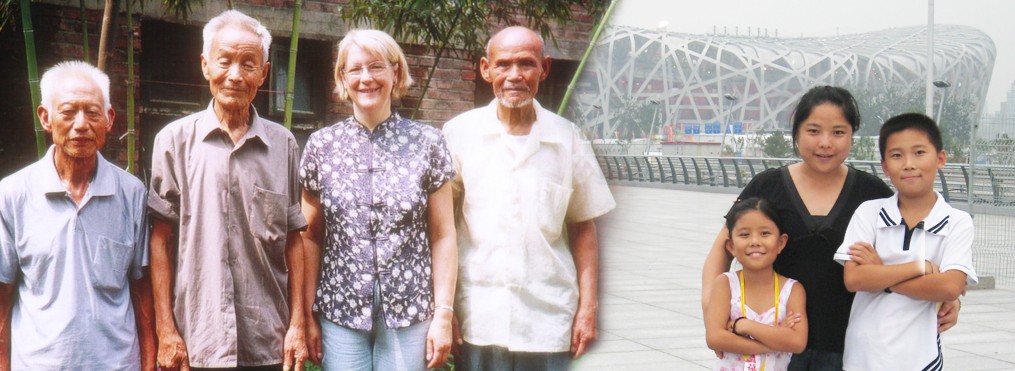The term „religion“ has a strongly European connotation without a clear definition of its meaning(s). In the Asian context I prefer terms like “spiritual or wisdom traditions” or “belief systems”. For the sake of simplicity, however, I use the word “religion” in the title.
The oldest spiritual traditions worldwide could be put together under the umbrella of “shamanist practices”. Such traditions are based on the belief that “spirits” can be influenced, and actions that aim to influence them to have their support and concrete help e.g. for healing purposes, to predict the future, to bring good luck for hunting etc. The techniques of shamans and the specific aims of their practices are, of course, culture and context bound.
Nikolas Thomas and Caroline Humphrey make a difference between what they call ”vertical shamanism“ meaning esoteric knowledge that belongs to a small elite group of practitioners. (In the old China vertical shamans came from shaman families, the jobs in the royal courts were passed from father to son and the men were carefully trained for their work) and “horizontal shamanism” referring to practices that can be performed by anyone, who is able to come into contact with spirits. They divide Chinese shamans, the 巫 wū, into three categories
| 或巫師huòwūshí | „tribal priests“ |
| 男巫 nánwū | male shamans, court officers, mediums / vertical shamanism |
| 女巫nǚwū | female shamans, healers and magicians, also mediums / horizontal shamanism |
The earliest archeological evidence of shamanist activities has been found in the Yellow River area in northern China dating from 4000 – 2200 years before our time. It includes objects like small human and animal statues made of stone as well as oracle bones and percussion instruments made of clay. The first Zhou-King 武王Wǔ Wáng (11. century before our time), is supposed to have been a gifted shaman himself.
Vertical shamans seem to have played a very important role at the courts. Some of them became extremely influential. According to old court records from Zhou-Dynasty the Chinese kings were believed to rule under the Mandate of Heaven. If they ruled well, their kingdoms prospered. If not, they lost their mandate and the result was a change of dynasty. The court shamans were vital members of the court in making sure that “Heaven” was satisfied with the ruling king. Their job was to mediate between the king and the Heaven.
However, the court shamans were not only mediums and advisors. They also served as court “scientists”. They studied the constellations of stars in order to make predictions for the future. They also wrote down genealogies in order to support the claims of rulers and kept careful books about historical events. Such records served additionally the development and standardisation of the language.
The court shamans lost their status in 1912 when the First Republic of China was founded. Confucianism was declared to state ideology and the tasks of shamans were handed over to priests, who replaced shamanic practices through Confucian rites.
It was a time of enlightment and social reorganization. All practices that had to do with the spirit world were forbidden, because they were thought to be remnants of the feudal, superstitious society of before. However, horizontal shamans have always been met in all walks of life. There is a continuous market for their services as healers, interpreters of dreams, know-it-alls and fortunetellers. Their social position may always have been rather weak, but as the rulers have preferred keeping them under control (as well as possible) rather than trying to forbid their activities completely (which they knew would have been impossible) shamans have never been persecuted all too strongly.
Today a paradigm shift can be observed as the current government seeks to establish and strengthen phenomena that they call “the spiritual heritage” of the nation in order to propagate nationalistic feelings of the citizens. For example shamanic practices are being “remodeled” by introducing new potentially helpful spirits such as Mao Zedong, Deng Xiaoping and Lei Feng. The regalia of a shaman may now include parts of a Red Guard uniform and modern sport shoes. The traditional chants are sometimes supplemented by the national hymn of the PRC.
Emily Chao (Chao, Emily 1999: The Maoist Shaman and the Madman: Ritual Bricolage, Failed Ritual, and Failed Ritual Theory. Cultural Anthropolgy 14(4): 505-511.) describes such a new kind of shamanist ritual in her article and points out that in the end it is always the audience that makes their judgment of its effectiveness based only on the result.
Adam Chau (Chau, Adam Yet 2006: Miraculous Response. Doing Popular Religion in Contemporary China. Stanford, California. Stanford University Press: 211-215.) has done research on popular belief systems in northern China in the 1980’s and states:
”To my knowledge there has been no crackdown on superstitious activities in Shaanbei since the 1980’s, which partly accounts for the vibrant popular religious life there. Yet so much of Shaanbei popular religious life (e.g. divination, spirit mediumism, rain prayers, symbolism of hell and divine retribution, etc.) would qualify as superstition according to the criteria of the Maoist era.”
and
“It is quite plane to everyone in the local state that cracking down on popular religion, no matter how superstitious it looks, will meet with popular disapproval and even resistance: it ´will not win people’s hearts´.”
